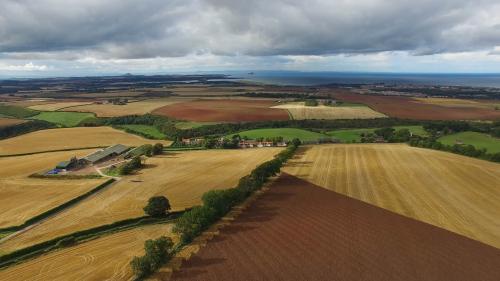
Climate change is expected to lead to warmer and wetter climates that could increase the number of, and damage caused by, pests and diseases in agriculture, horticulture and forestry. It is, therefore, vital that we improve our understanding of these potential biological threats, in order to develop strategies to adapt. To help, we have created a state-of-the-art, and free to download, desktop app to provide climate change risk assessments for crops pests and diseases in the UK that anyone can use.
Stage
Work in ProgressPurpose
Pests and diseases pose a serious threat to society as they attack the plants we need for food, health and shelter. There is a 40% loss in global food production alone due to pests and diseases. The fingerprints of climate change are becoming ever more visible and are helping pests and diseases spread around the world. It is expected that the problem will get worse in the future as global temperatures continue to rise. The expected changes in temperature and rainfall will directly affect the development and survival of crop pests and pathogens, their natural enemies, competitors and the organisms that help them to spread (vectors). This may alter the impact of native pests and diseases and could even increase the populations of some species which are not currently recognised as such.
Results
We have developed a desktop app to help everyone investigate and visualise future crop pest and pathogen scenarios based on a changing climate. No modelling experience is necessary. With a few clicks and twists of a set of simple sliders and switches you will have a deeper understanding of some of the climate change science you might see or hear daily. It is free to download, easy to use, and comes pre-loaded with real UK crop and climate change data. You can fit a risk model to your own experimental data (e.g. crop disease data) with a few easy clicks or, if you don’t have your own data, you can simply select a risk model from a drop-down list. You then choose a crop distribution to apply your model in, select a time period and climate change scenario, and hit the run button to visualise and save your results.
The app is unique as it includes the ability to simulate different types of pest and pathogen dispersal among crop locations, whereas most climate-based risk mapping systems do not include this functionality. This is an important advance as the distance between crops can have a large effect on the spread of pests and diseases. You can also generate your own crop distributions to simulate changes in the distribution of plants and land suitability for crops under climate change.
We also plan to keep adding new features to the app, so watch out for further developments.
Benefits
The app is new, but this modelling framework (the component models together with the crop and climate data) is well tested and has provided a number of researchers with a climate change risk assessment. This includes assessments of the future risks of Fusarium head blight of wheat and potato late blight in Scotland, and the threat of potato cysts nematode species in Great Britain. These studies have helped formulate agricultural adaptation strategies to climate change in the UK.
For example, in the potato late blight study it was found that the risk of spore dispersal among potato crops will increase by up to 60% during the first half of future growing seasons, whereas the risk of late blight infection will remain roughly the same. If the focus had only been on infection risk and did not include dispersal among crops, different conclusions would have been reached regarding the future risk of late blight. This was a particularly significant result for the potato industry as early preventative measures are considered crucial in averting large-scale potato late blight epidemics.
We are currently investigating the future threat posed to food production in the UK by various non-indigenous ‘European’ bacterial plant pathogens. To make our research more accessible we developed this app, which we hope will be useful in the first instance to visualise the pattern of different crops and land use types in the UK and the pattern of climate variables in the future. By modelling the interaction between the two we can then ascertain which risk model offers the best insight into future threats.
Related Links
Research Papers
- 2017 - Potential impacts of climate change on the threat of potato cyst nematode species in Great Britain
- 2016 - Crop connectivity under climate change: future environmental and geographic risks of potato late blight in Scotland
- 2015 - Future environmental and geographic risks of Fusarium head blight of wheat in Scotland